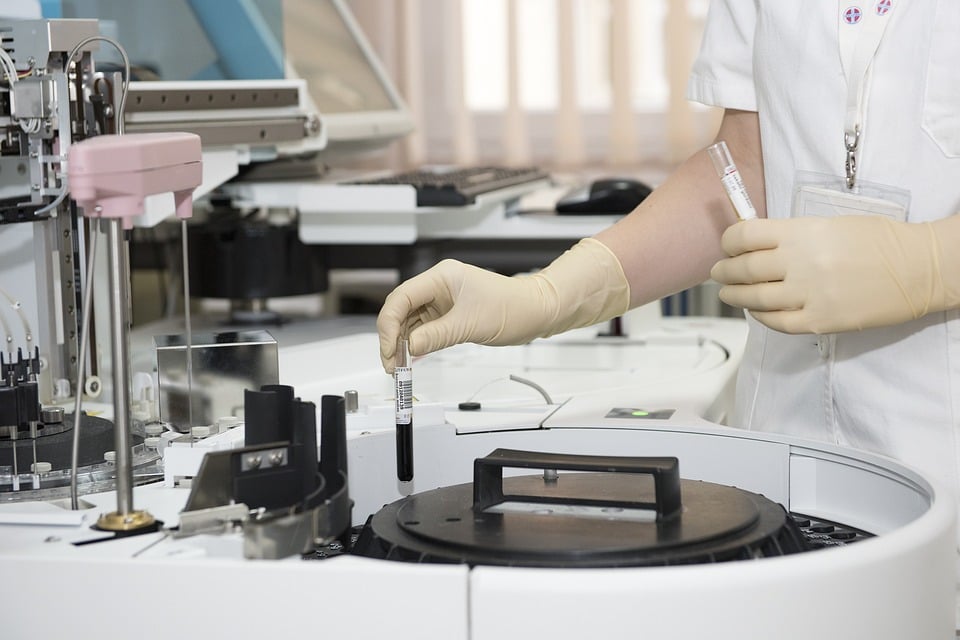Rising practical human organs exterior the physique is a long-sought “holy grail” of organ transplantation drugs that continues to be elusive. New analysis from Harvard’s Wyss Institute for Biologically Impressed Engineering and John A. Paulson College of Engineering and Utilized Science (SEAS) brings that quest one massive step nearer to completion.
A group of scientists created a brand new technique to 3D print vascular networks that encompass interconnected blood vessels possessing a definite “shell” of easy muscle cells and endothelial cells surrounding a hole “core” via which fluid can stream, embedded inside a human cardiac tissue. This vascular structure carefully mimics that of naturally occurring blood vessels and represents vital progress towards having the ability to manufacture implantable human organs. The achievement is revealed in Superior Supplies.
“In prior work, we developed a brand new 3D bioprinting technique, often called “sacrificial writing in practical tissue” (SWIFT), for patterning hole channels inside a residing mobile matrix. Right here, constructing on this technique, we introduce coaxial SWIFT (co-SWIFT) that recapitulates the multilayer structure present in native blood vessels, making it simpler to kind an interconnected endothelium and extra strong to resist the inner strain of blood stream,” stated first writer Paul Stankey, a graduate pupil at SEAS within the lab of co-senior writer and Wyss Core School member Jennifer Lewis, Sc.D.
The important thing innovation developed by the group was a singular core-shell nozzle with two independently controllable fluid channels for the “inks” that make up the printed vessels: a collagen-based shell ink and a gelatin-based core ink. The inside core chamber of the nozzle extends barely past the shell chamber in order that the nozzle can absolutely puncture a beforehand printed vessel to create interconnected branching networks for ample oxygenation of human tissues and organs through perfusion. The scale of the vessels may be diverse throughout printing by altering both the printing pace or the ink stream charges.
To substantiate the brand new co-SWIFT technique labored, the group first printed their multilayer vessels right into a clear granular hydrogel matrix. Subsequent, they printed vessels right into a lately created matrix known as uPOROS composed of a porous collagen-based materials that replicates the dense, fibrous construction of residing muscle tissue. They had been in a position to efficiently print branching vascular networks in each of those cell-free matrices. After these biomimetic vessels had been printed, the matrix was heated, which prompted collagen within the matrix and shell ink to crosslink, and the sacrificial gelatin core ink to soften, enabling its simple elimination and leading to an open, perfusable vasculature.
Shifting into much more biologically related supplies, the group repeated the printing course of utilizing a shell ink that was infused with easy muscle cells (SMCs), which comprise the outer layer of human blood vessels. After melting out the gelatin core ink, they then perfused endothelial cells (ECs), which kind the interior layer of human blood vessels, into their vasculature. After seven days of perfusion, each the SMCs and the ECs had been alive and functioning as vessel partitions – there was a three-fold lower within the permeability of the vessels in comparison with these with out ECs.
Lastly, they had been prepared to check their technique inside residing human tissue. They constructed a whole lot of 1000’s of cardiac organ constructing blocks (OBBs) – tiny spheres of beating human coronary heart cells, that are compressed right into a dense mobile matrix. Subsequent, utilizing co-SWIFT, they printed a biomimetic vessel community into the cardiac tissue. Lastly, they eliminated the sacrificial core ink and seeded the interior floor of their SMC-laden vessels with ECs through perfusion and evaluated their efficiency.
Not solely did these printed biomimetic vessels show the attribute double-layer construction of human blood vessels, however after 5 days of perfusion with a blood-mimicking fluid, the cardiac OBBs began to beat synchronously – indicative of wholesome and practical coronary heart tissue. The tissues additionally responded to widespread cardiac medication – isoproterenol prompted them to beat quicker, and blebbistatin stopped them from beating. The group even 3D-printed a mannequin of the branching vasculature of an actual affected person’s left coronary artery into OBBs, demonstrating its potential for customized drugs.
“We had been in a position to efficiently 3D-print a mannequin of the vasculature of the left coronary artery primarily based on information from an actual affected person, which demonstrates the potential utility of co-SWIFT for creating patient-specific, vascularized human organs,” stated Lewis, who can also be the Hansjörg Wyss Professor of Biologically Impressed Engineering at SEAS.
In future work, Lewis’ group plans to generate self-assembled networks of capillaries and combine them with their 3D-printed blood vessel networks to extra absolutely replicate the construction of human blood vessels on the microscale and improve the operate of lab-grown tissues.
“To say that engineering practical residing human tissues within the lab is tough is an understatement. I am happy with the dedication and creativity this group confirmed in proving that they may certainly construct higher blood vessels inside residing, beating human cardiac tissues. I look ahead to their continued success on their quest to at some point implant lab-grown tissue into sufferers,” stated Wyss Founding Director Donald Ingber, M.D., Ph.D. Ingber can also be the Judah Folkman Professor of Vascular Biology at HMS and Boston Youngsters’s Hospital and Hansjörg Wyss Professor of Biologically Impressed Engineering at SEAS.
Extra authors of the paper embrace Katharina Kroll, Alexander Ainscough, Daniel Reynolds, Alexander Elamine, Ben Fichtenkort, and Sebastien Uzel. This work was supported by the Vannevar Bush School Fellowship Program sponsored by the Fundamental Analysis Workplace of the Assistant Secretary of Protection for Analysis and Engineering via the Workplace of Naval Analysis Grant N00014-21-1-2958 and the Nationwide Science Basis via CELL-MET ERC (#EEC-1647837).

